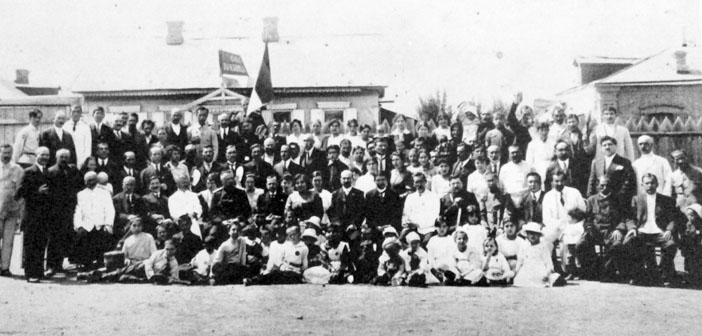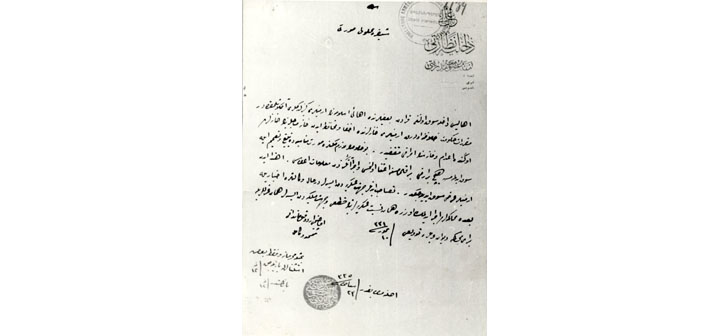Mehmet Polatel, PhD candidate in Boğaziçi University, gave a presentation titled as “Demographic and Socioeconomic Outcomes of Hamidian Massacres in Van” in “The Social, Cultural and Economic History of Van and the Region” conference organized by Hrant Dink Foundation. We talked to Polatel focusing on his presentation.
Historical sources define Van and the region
as an area where Armenian people was shaped. Given the current
population of Van, what do you think about the economic and cultural
outcomes of this change?
Given the historical sources, Armenians and Kurds constituted the majority of the population in and around Van. A centralization movement started in Ottoman Empire especially with the Edict of Gülhane and this development brought about major changes in eastern provinces including Van. In 1840s, emirates had been the dominant system of government in the region. The central government dissolved that system but failed to replace it with the central authority, leading to a chaotic atmosphere. In many regions, the ashirats started to fight for regional dominance and sheiks became more powerful. With this process, a similar chaotic atmosphere also emerged in Van. Starting from the second half of 19th century, villagers had been suffering from these developments. Fron 1860s onward, Armenian villagers had been filing complaints to the patriarch about the oppression and plunders by aghas and begs. The patriarchate tried to solve these problems, but failed. With the reform decision made in Berlin Congress in 1878, the nature of the problem started to change; population and demographic distribution became an important concern for the central government. In this process, the central government started to develop policies in order to increase the Muslim population in 6 provinces including Van, which were densely populated by Armenians. An order about these polices was sent in 1889. That order wasn't followed, so they sent another one with the intention of placing Caucasian Muslim immigrants into Erzurum, Van and Hakkari. The formation of Hamidian regiments and the massacres in 1894-1897 caused changes in population and demographic structure. In Van, almost 10,000 Armenian were forced to immigrate and around 10,000 Armenians were killed. Later, there had been genocide, resistance and occupation and a demographic and socioeconomic reshaping process took place. However, we cannot understand the current situation of Van only with these processes, though they played an important part in the transformation of Van.
Some Kurdish political movements include Lake Van and the region in the Kurdistan maps. Is it correct to draw such maps only considering the current demographic structure?
Maps have an important function in terms of imagination of the identities. We see that maps and names of the places have an important role in the struggles for the territories, which different groups have been claiming since 19th century. Thus, we can say that each political movement expresses its own geographical imagination in the maps they draw. This can be seen in the maps that have been drawn by Armenian and Kurdish political movements. This is nothing new; it has been discussed since the late 19th century on an intellectual and political level. So, this is the reason why we see Lake Van and the region are included in different maps with different names.
How did the ethnic cleansing carried out by Hamidian regiments affect the demographic structure of Van?
The massive violence carried out by the regiments in the region and the feeling of insecurity that lingered in Van for a long time had a deep impact on the life in Van. There are 3 factors that affected the demographic structure in this process: murders, migration and population settlement. During this period, Armenians migrated to Iran, Russia and different regions of Ottoman Empire. We know that there were plans for placing Muslim immigrants into those places and local authorities provided information as to where those Muslims could be settled. During Hamidian period, especially after 1894-97 massacres, important developments took place that affected the demographic structure of Van. However, the historians are yet to determine the exact numbers. The more archive documents we have, the more we will find out.
Today, trading activities with Iran is an important factor that determines the economic life in Van. How was trade in Van in the past? What was the most important factor determining the economy?
Since Van is a border province, the trade with Iran has always been important for economy. The ashirats reaching to both countries had important parts in the trade. When we look at the products that were produced in Van and sold outside Van, we can say that tobacco was an important product. We should note that small cattle trade was also important in terms of the socioeconomic life in Van. We see that the stocks raised in Van were sold to different regions of the empire, especially to Aleppo. Also, the animals that were brought to Van from Iran had been sold in other regions. Thus, it can be said that Van was an important transit point in animal trade. Agricultural production was also important. In addition to grains, flax seed was also raised in small amounts. Also, in Şatak district, there was shawl manufacturing. These products were sold in Van and exported in small quantities.





